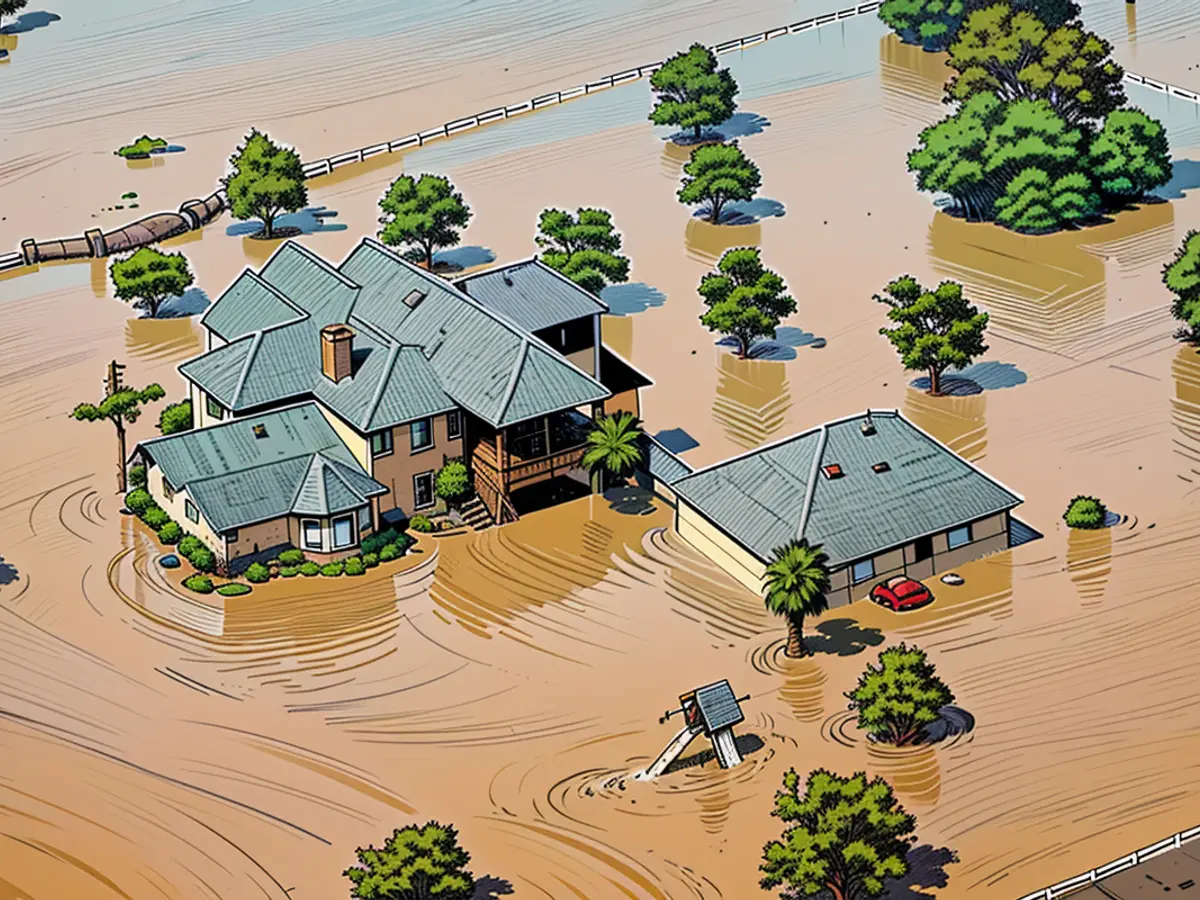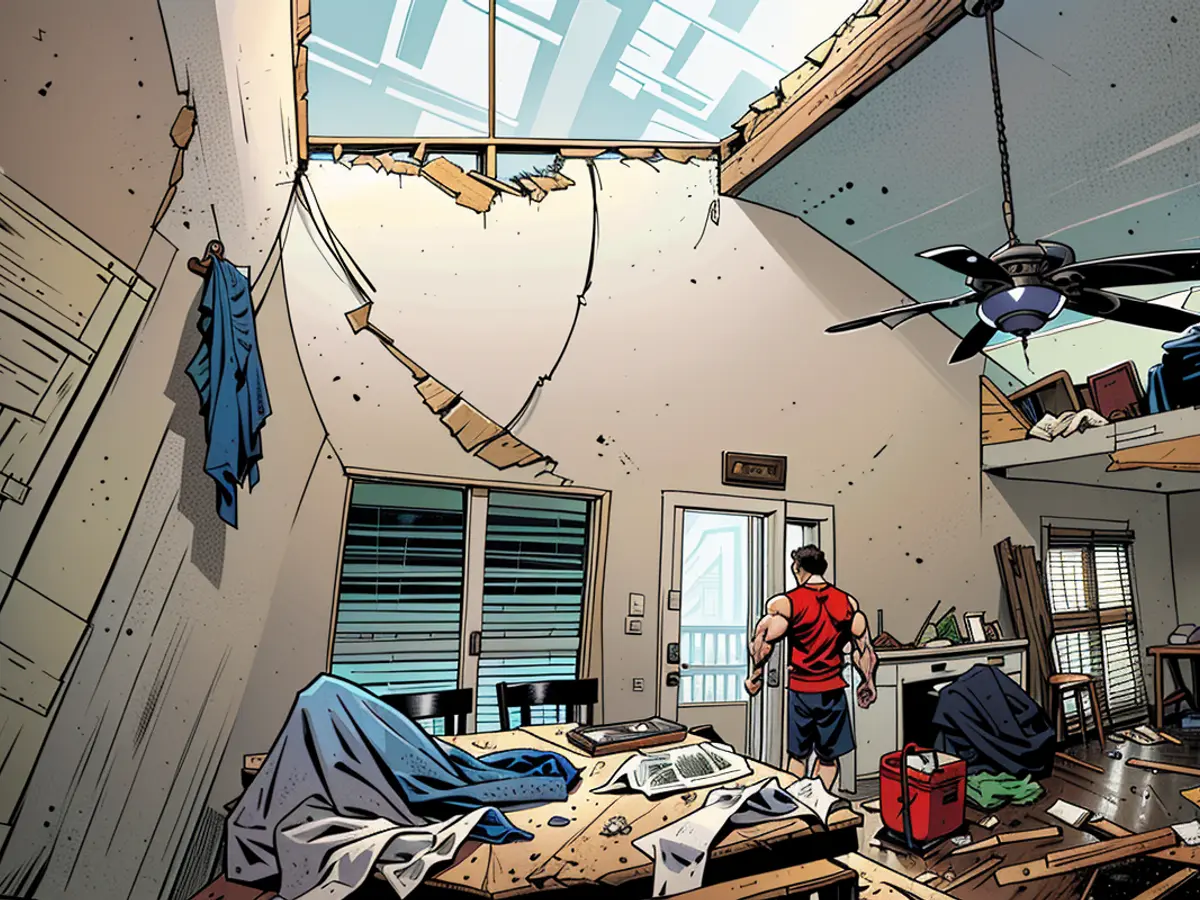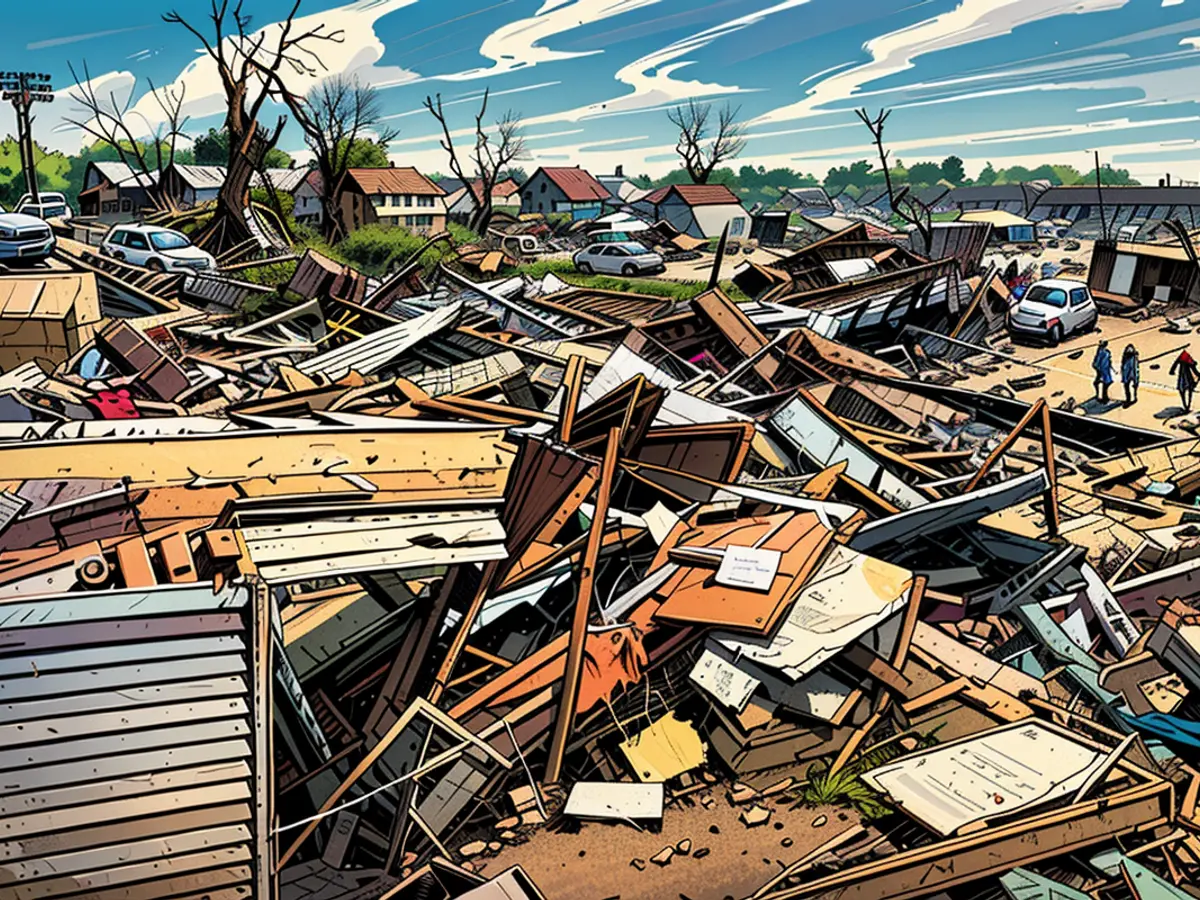IS AMERICA READY FOR DISASTER?
- This CNN Opinion series brings you expert viewpoints on how we can better prepare for catastrophes:
- The billion-dollar disasters around the corner
- In the blink of an eye, a wildfire changed everything
- It’s time to evacuate. But why won’t people flee the encroaching disaster?
- Our disaster responders are exhausted. This puts Americans at risk
- Many people can’t physically flee disasters. Too often, we fail to help them
- ‘The big one’ disaster could happen in our lifetime. Can we even be ready?
- We’re neglecting pets in disasters — with tragic consequences
Opinion: Americans don’t have enough in the bank to weather unrelenting disasters
Individuals and their communities should act now to build their financial resilience. Some, though, believe the federal government will make them whole when disaster strikes. As the former Federal Emergency Management Agency (FEMA) official responsible for helping Americans prepare for disasters, I can tell you this is simply not the case.
All too often, I would arrive in a community following a disaster to find survivors desperate for help. FEMA can provide assistance to support emergency needs, yet I also knew that the long-term needs of people hit hard by disaster would not be met with FEMA aid alone.
The survivor’s journey begins with immediate actions such as evacuating out of harm’s way and meeting basic needs such as food and shelter. These all cost money — money that the survivor may not have available. In fact, 37% of Americans say they do not have the cash to cover a $400 emergency expense.
Later, as a survivor seeks to rebuild and recover, they often find that the costs of replacing their possessions and homes are beyond their means. FEMA provides modest, needs-based aid aimed at immediate relief and essential repairs. The assistance is capped, but in reality most disaster survivors only qualify for a fraction of the $42,500 maximum for housing assistance and $42,500 maximum for other needs assistance. FEMA’s aid is not intended to cover full recovery costs.
Many Americans lack the financial preparedness skills and tools necessary to bounce back from disasters. This is for a variety of reasons, many of which can be addressed prior to a disaster. Some think disasters won’t strike where they live (disasters can happen anywhere). Others believe that FEMA assistance will satisfy all their needs (it won’t). Some simply do not have the financial resources to sustain a cash reserve (but with proper planning, many can make progress in this area).

Will you flood outside of a flood zone?
Insurance is one way to protect against the financial impacts of disasters. Yet, two-thirds of Americans do not have adequate property insurance coverage. One in 13 have no insurance at all. Even those who have insurance often don’t know what their policy covers.

Renters are particularly at risk: only 37% have renters insurance. This means that for many renters, their possessions are not covered if there is a disaster or any other kind of loss.
Not only do many Americans lack sufficient homeowners and renters’ coverage, but they also lack certain types of disaster-specific insurance. While standard homeowners insurance policies cover damage from fire, wind and hail, losses from other types of disasters, such as flooding and earthquakes, are usually not covered.
Even though floods have impacted 99% of US counties over the past 28 years, only 4% of homeowners have flood insurance. The financial difference between a survivor with flood insurance and without is stark.
Consider Hurricane Harvey in 2017. For those without flood insurance, FEMA provided $4,400 on average. The average payment to those who had flood insurance was $118,000.
While homeowners with a federally backed mortgage living in a flood zone are required to have flood insurance, all homeowners and renters should consider it. At FEMA, we often repeated the maxim “where it rains, it can flood,” because 40% of flood claims are outside designated flood zones.
The cost of insurance has increased for various reasons, from disasters to inflation to issues unique to each state. While not all these factors can be controlled by a policyholder (or insurer, for that matter) because insurance is priced based on risk, one way to address these costs is to reduce risks.
Risk-reduction measures such as upgraded roofs and windows not only help a home weather a disaster but can yield real benefits for homeowners through lower premiums and higher resale values. Homes in Alabama that were strengthened to a hurricane-resistant standard, for example, have 16% to 40% lower property insurance premiums and sell for 6% to 7% more than their neighbors’ homes.
Communities and their residents also benefit from these investments. According to a recent study by the US Chamber of Commerce and Allstate, every $1 invested in resilience saves communities $13. This is because resilience measures reduce physical damage, cleanup costs and economic impacts. With fewer impacts, not only will home repair bills be reduced but more-resilient businesses mean fewer residents will lose their jobs, and the entire community will bounce back faster after a disaster.
Individuals and communities both have roles to play in building financial resilience to disasters. Those who are financially prepared will recover more quickly and more fully.

Saving and investing for disasters
The first step of preparedness is assessing one’s insurance as a financial shock absorber for disasters. Those with property insurance were 82% less likely to have high financial burdens in the near- and long-term following a hurricane, according to a recent study.
Reviewing and updating insurance policies to ensure adequate protection against disasters is essential. At a minimum, homeowners and renters must ensure their policies cover potential risks specific to their regions, such as floods, earthquakes or hurricanes. In addition, individuals should consider life, disability and health insurance to protect against personal and financial losses. Insurance literacy programs can also help you understand your policies and make informed decisions.
Everyone should prioritize building an emergency savings fund by saving a bit each month. Financial experts advise saving three to six months’ worth of living expenses. This fund should be readily available in a checking or savings account, with a few hundred dollars in cash on hand for immediate needs.
This should only be used for true emergencies. Consider setting up automated savings plans to consistently contribute a portion of your income into a dedicated savings account without requiring constant decision-making.
Stock up on supplies when they are more readily available (and ideally on sale). This should include food, water and other survival essentials, but also consider items such as generators, which could enable you to shelter in place (and reduce the costs of staying elsewhere) after a disaster.
Florida and Virginia have disaster preparedness sales tax holidays, during which essential supplies can be purchased without paying sales tax. No state is immune from disaster, so all states should consider such programs to encourage lower-cost preparedness. Check with your local emergency management agency for any incentive programs that may be available to you.
Reduce your risks. Money spent now on hazard mitigation measures, such as retrofitting a home in a seismically active area or elevating a home in a flood zone, can safeguard your family, reduce financial losses and even reduce your insurance premiums. Many are relatively easy and affordable, such as removing brush around your home to reduce the risk of wildfires.
States are increasingly offering grants and other financial incentives to help homeowners defray the costs of home-hardening measures. For example, the Strengthen Alabama Homes Program provides up to $10,000 to replace your roof to withstand hurricane-force winds.

It takes a community to further financial resilience
But individuals alone cannot manage the overhwhelming risks they face from disasters. Communities play a critical role in supporting their residents through strong building codes, federal grant programs and financial literacy programs.
Living in coastal areas increases susceptibility to hurricanes, while residing in low-lying regions raises the risk of potentially disastrous flooding. Local officials can discourage development in risky areas through zoning laws. Likewise, officials can require that new homes be built to a disaster-resilient standard through building codes. Just one in three jurisdictions have adopted modern building codes, even though these codes save $11 for every $1 invested.
The federal government offers several grant programs to help communities strengthen their resilience to disasters. For example, FEMA’s Building Resilient Infrastructure and Communities grant program provides funding for infrastructure upgrades and community projects to reduce disaster impacts.
As part of that program, FEMA recently identified economically disadvantaged communities at risk of natural disasters. These Community Disaster Resilience Zones qualify for reduced local costs and additional technical assistance.
If a local government takes proactive steps to reduce its flood risks, FEMA provides discounts to National Flood Insurance Program policyholders in the community. Called the Community Rating System, participation in the program could mean discounts of up to 45% for residents’ flood insurance premiums.
Improving financial literacy is fundamental for making sound financial disaster preparedness decisions. Community programs, online courses and workshops can offer valuable budgeting, saving, investing and insurance education. Employers and schools can also play a significant role by providing financial education and resources to their employees and students. A pilot program underway in New York City, for example, focuses on protecting low- to moderate-income residents against flood risk.
Given the scale of the challenge, there is no silver bullet to address the financial vulnerability many Americans face. But taken together, actions by individuals and communities can reduce the financial impacts of disasters — even when the costs may seem insurmountable for households that may already find it hard to make ends meet.
With unrelenting disasters, the highest cost is doing nothing — so the time to prepare is now.
Individuals frequently underestimate the need for financial preparedness, with 37% of Americans stating they cannot cover a $400 emergency expense. Additionally, many people rely on the belief that the federal government will fully compensate them for disaster losses, which is not the case.
Despite having insurance, two-thirds of Americans lack adequate property coverage, and only 4% of homeowners have flood insurance, although floods have impacted 99% of US counties over the past 28 years.







